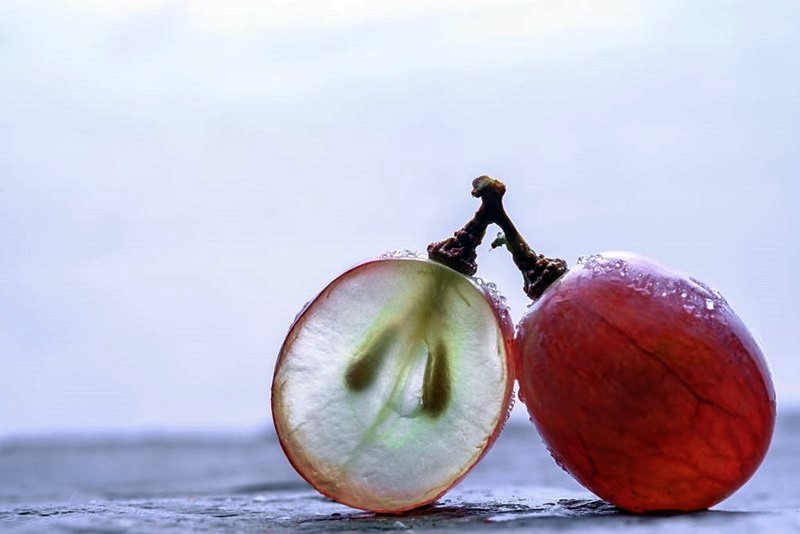The remarkable composition and development of grapes
From cell division to aromatic compounds: grapes explained

Grapes, revered by many for their sweet taste and heralded for their central role in winemaking, are more than just simple fruits. They are a culmination of nature's intricate processes, offering a complex amalgamation of sugars, acids, and tannins. Let us dive into the fascinating world of grapes to understand their makeup and growth.
The Anatomy of a Grape
A grape is the fruit of the vine, developing in clusters following the fertilization of the flowers. Each grape berry is attached to a stalk-like structure known as the pedicel. Before pressing grapes for winemaking, there is the removal of the 'raspón'—the central part to which individual berries are attached. This process, termed 'destemming', is crucial as retaining the raspón would imbue the wine with an undesirable bitter taste.
Grapes can be spherically or oblong-shaped, enveloped by a skin that can account for up to 10% of its weight. This skin is a reservoir of essential components like pectin, cellulose, aromatic compounds, and polyphenolic elements, notably tannins. The presence of tannins, in particular, plays a significant role in bestowing wine with its structure and astringent characteristics.
The extraction of both aromatic compounds and polyphenols from the grape skin is feasible through maceration in the grape must. The extent of extraction is contingent on the duration of maceration. Given that these polyphenols are alcohol-soluble (and to a lesser degree, water-soluble), red grape skins are macerated in must to impart color, aroma, and tannins to red wines.
A waxy substance called 'pruina' coats the grape skin. This becomes more conspicuous in red grapes due to its whitish hue. On this layer, naturally occurring yeasts can be found. When these yeasts come in contact with the must, they activate the alcoholic fermentation process. As for the pulp inside the grape berry, it's predominantly water with sugars, acids, pectins, minerals, vitamins, and nitrogenous substances, with concentrations varying across different parts of the berry.
Understanding Xylem and Phloem in Grape Development

For the uninformed, the terms xylem and phloem might sound arcane. However, they're paramount to the development of grapes. The grape cluster, essentially a complex flower, comprises a stem, peduncle, rachis, and the fruit itself. To flourish, grapes require essential nutrients. These nutrients are drawn from the xylem—responsible for transporting water, minerals, and sugars from the root to different parts of the plant—and the phloem, which manages the movement of carbohydrates from the leaves to the main vine and to the fruit.
During the early growth phase, the phloem's role is diminutive, with the xylem handling most of the nutrient transport. Yet, as the fruit begins to ripen—a stage termed 'veraison'—the phloem becomes the primary nourishment source.
Stages of Grape Development
- Rapid Growth: The initial stage witnesses the formation and expansion of grapes, resulting from cellular division. Here, grapes accrue acids—malic acid in the fleshy part and tartaric acid mainly in the skin. Tannins, responsible for the bitterness and astringency in wine, are also accumulated predominantly in the skin and seeds during this period.
- Slowed Growth & Seed Maturation: A temporary halt in grape growth marks this stage. The embryos inside the seeds begin to grow, and by the end of this phase, these seeds attain their full size.
- Color Transformation - Veraison: Veraison is the defining moment when grapes change color. Sugars accumulate, acids metabolize, and the grapes double in size. The amount of malic acid diminishes, especially in warmer regions. Factors like grape variety, ripening duration, climatic conditions, and water availability dictate the sugar concentration in grapes.
During the grape's maturation, the synthesis of various aromatic compounds takes place, which will later influence the wine's flavors and aromas. Truly, the grape can be seen as nature's impeccable biochemical factory.
Founded in 2007, Vinetur® is a registered trademark of VGSC S.L. with a long history in the wine industry.
VGSC, S.L. with VAT number B70255591 is a spanish company legally registered in the Commercial Register of the city of Santiago de Compostela, with registration number: Bulletin 181, Reference 356049 in Volume 13, Page 107, Section 6, Sheet 45028, Entry 2.
Email: [email protected]
Headquarters and offices located in Vilagarcia de Arousa, Spain.